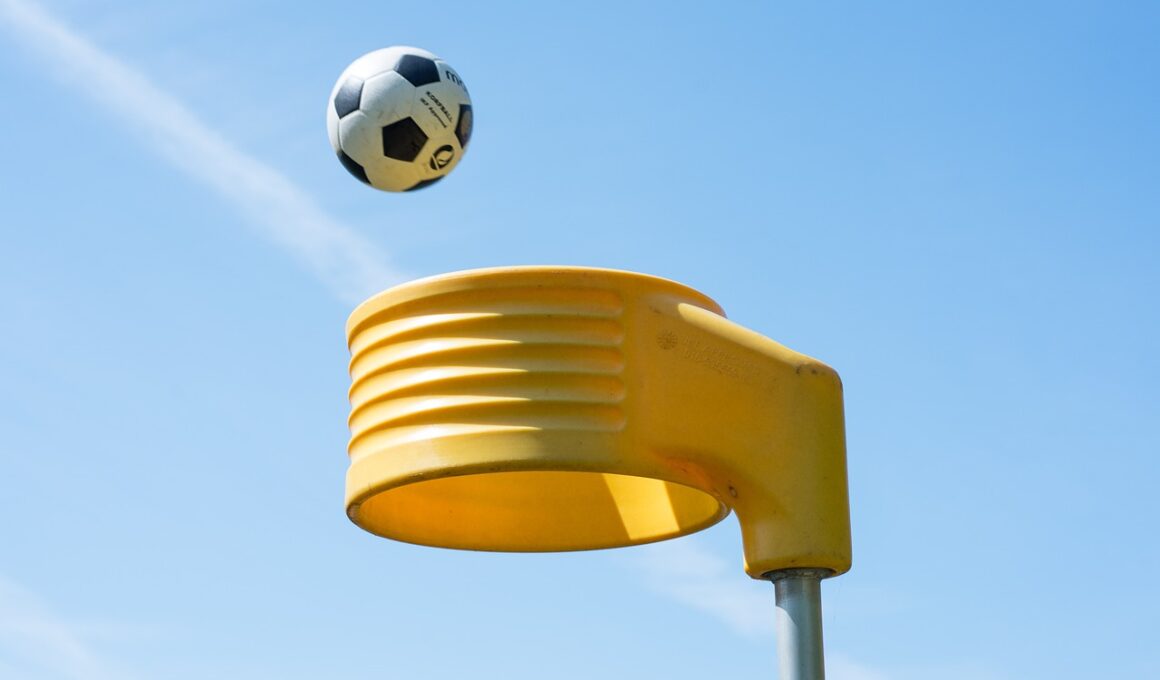The Importance of Spatial Awareness in Korfball
In the dynamic game of Korfball, spatial awareness stands as one of the most critical skills a player can possess. Understanding the positioning of teammates and opponents enhances both individual and team performance. This awareness allows players to make more informed choices during gameplay. Those who grasp spatial dynamics can effectively navigate the field, whether passing, shooting, or defending. An intelligent player not only recognizes their own position but also anticipates where others will move. Moreover, this anticipation helps in predicting opponent actions, which is vital for creating strategic plays. Spatial awareness also helps in maintaining proper distances from teammates and opponents, preventing congestion during fast-paced scenarios. When players are cognizant of their surroundings, engage in proactive communication, and synchronize movements, the entire team benefits. Incorporating drills that promote spatial awareness can significantly enhance a player’s game. Coaches should emphasize exercises that encourage players to develop this skill throughout practices. By fostering a keen sense of space, Korfball teams can enhance both offensive and defensive strategies alike.
Coaches play a pivotal role in developing spatial awareness in Korfball players. They can implement various strategies during practice sessions to cultivate this essential capability. One effective method is through small-sided games, which create a high-density situation where players must make quick decisions based on their surroundings. In these condensed formats, Korfball athletes learn to read the game better, assessing spaces that can either be occupied or utilized effectively. Another approach involves running positional drills that emphasize tactical movement. This not only nurtures spatial awareness but also reinforces understanding team dynamics. Moreover, using video analysis to review gameplay can also help players visualize their positional awareness on the field. By watching themselves and others in action, athletes can identify areas of improvement and gain insights on effective positioning. Coaches should also encourage open discussions about spatial strategies after games or practices, allowing players to share insights on their experiences. All these methods combined can significantly boost the spatial intelligence of Korfball players, integrating this invaluable skill into their overall game performance.
Impact on Game Strategy
Spatial awareness significantly impacts the strategic aspects of Korfball, leading to enhanced team cohesion and effective gameplay. When players demonstrate solid spatial awareness, they can effectively execute plays that capitalize on opponent weaknesses. Proper spacing allows for better passing opportunities, as players can quickly identify open lanes to receive the ball. Additionally, heightened perception of space enables players to adjust their positioning to support teammates without overcrowding. This ensures that each player has adequate room to maneuver, whether for shots on goal or creating defensive blocks. Furthermore, understanding opponent positioning can lead to implementing strategic feints or cuts, confusing defenders. One theory worth noting is the effectiveness of ‘spatial triangulation,’ where players position themselves in relation to teammates to create angles for attack. Moreover, maintaining awareness of fluctuating spaces during a game helps in transitioning from offense to defense without losing momentum. The interplay of spatial dynamics ensures players remain adaptable to varying game situations, enhancing overall strategy execution while maintaining fluid communication amongst the team.
In Korfball, spatial awareness also contributes to the development of individual player skills. Those who refine this skill find improvements in their dribbling, passing, and shooting techniques, leading to well-rounded athletes. The ability to gauge distances effectively empowers players to master precise passing and shooting from various angles. This adaptation helps players adjust their techniques based on their surrounding team dynamics and opposition. Moreover, spatial awareness encourages quick decision-making, necessary for high-stakes gameplay. Players learn to maintain focus while monitoring their surroundings simultaneously. Practicing methods such as visualization can also enhance drilling, allowing players to imagine their movements and spatial relationships without physical limitations. When athletes mentally prepare for spatial challenges, they build confidence in their ability to adapt swiftly during games. Coaches may leverage goal-targeting exercises to improve this skill alongside drills that focus on defensive positioning. Ultimately, developing individual player skills through heightened spatial awareness creates a stronger team foundation in Korfball, leading to improved performance in competitive settings.
Game Awareness and Spatial Practices
Moreover, mastering spatial awareness establishes a foundation for broader game awareness in Korfball. This includes recognizing how tactics evolve throughout a match, adapting to strategies devised by other teams. Players with good spatial recognition can shift gears, offering support when needed while simultaneously maintaining personal offensive strategies. Building this skill requires consistent practice and comprehensive training. Teams should incorporate varied exercises focused on spatial drills, including cooperative training where players are challenged to both work together and analyze opponent actions. One such exercise is the ‘4 vs. 4′ scenario, naturally creating opportunities for players to enhance their spatial awareness while emphasizing team dynamics. This game scenario also shifts players’ focus to consider potential strategies for both attacking and defending. Additionally, using training aids, such as cones or markers, can create visual boundaries aiding in comprehension during practice. When players can see the layout clearly, they may better grasp spatial relationships on actual game day. Creating a routine of spatial practices helps solidify these principles, leading to lasting improvements in overall gameplay.
The impact of spatial awareness extends beyond just tactical gameplay; it also affects player confidence and leadership within the team. Athletes with heightened spatial perceptions often emerge as natural leaders, guiding teammates through awareness both on and off the field. Skillful navigators of space can take charge during high-pressure moments, directing play in critical scenarios. This leadership is invaluable for maintaining team structure and morale. Additionally, improved spatial intelligence builds an athlete’s confidence, empowering them to make daring plays without second-guessing themselves. As players become more aware of their surroundings, they also develop trust in their teammates. This trust translates into smoother coordination during plays that require synchronization, like double cuts or layered offense strategies. Therefore, incorporating spatial awareness training fosters not only the technical capabilities of each athlete but also nurtures personal development as effective team players. By focusing on spatial practices, coaching efforts lead to comprehensive growth—both in player skill and team unity—transforming the entire Korfball experience for athletes.
Conclusion
Ultimately, spatial awareness in Korfball serves as a cornerstone for success on multiple levels—tactics, performances, and teamwork. Players who harness this skill elevate their individual games while simultaneously enhancing team functionality. By focusing on improving spatial perception, teams can achieve unexpected heights in competitiveness and cohesiveness. Coaches have the unique opportunity to emphasize these critical skills through various structured training sessions. By incorporating diverse drills, fostering discussions, and utilizing modern technology, they can prepare players for greater excellence on the field. The emphasis on spatial awareness not only fortifies Korfball strategies but also creates a robust culture of support among teammates. As players evolve and improve their understanding of space, their confidence and leadership qualities will naturally flourish, ultimately benefiting the overall atmosphere of Korfball. In conclusion, enhancing spatial awareness cultivates smarter players, strengthens team dynamics, and promotes resilient attitudes. Therefore, teams committed to developing spatial intelligence will likely see increased success and a deeper appreciation for the game.



